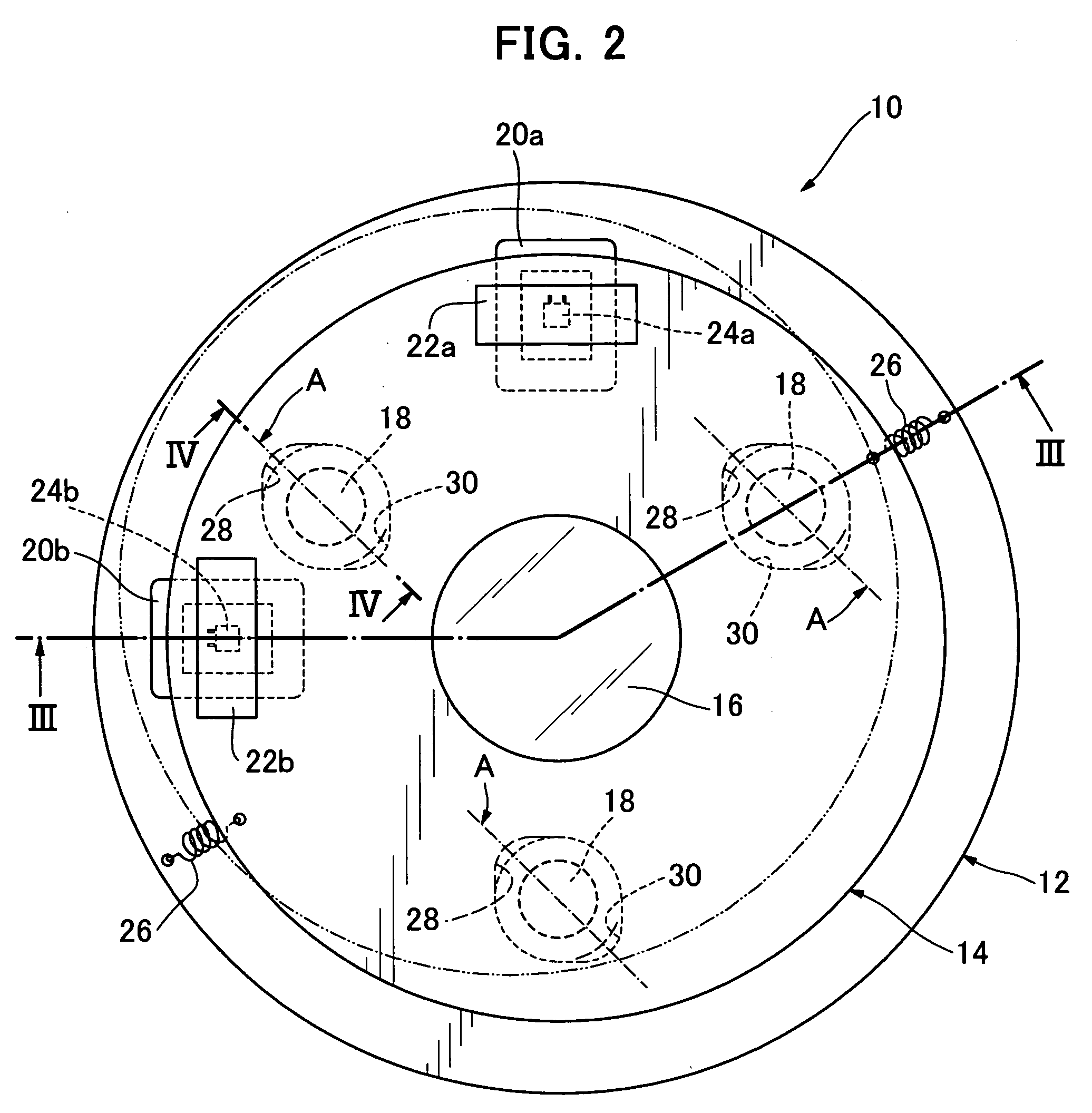Image stabilizing actuator and camera furnished therewith
a technology of image stabilizing actuator and camera, which is applied in the direction of optics, instruments, optics, etc., can solve the problems of prone to damage to the receiving surface, and affecting the control of the moving frame, so as to reduce the contact pressure
- Summary
- Abstract
- Description
- Claims
- Application Information
AI Technical Summary
Benefits of technology
Problems solved by technology
Method used
Image
Examples
first embodiment
[0023]We next discuss preferred embodiments of the present invention with reference to the attached figures. First we discuss the present invention with reference to FIGS. 1 through 7. FIG. 1 is a cross sectional view of the camera of this embodiment.
[0024]As shown in FIG. 1, a camera 1 of the first embodiment has a lens unit 2 and a camera main body 4. The lens unit 2 has a lens barrel 6, a plurality of imaging lenses 8 arrayed within the lens barrel, an actuator 10 for moving a image blur compensation lens 16 among the imaging lenses 8 within a predetermined plane, and gyros 34a and 34b (only34a is shown in FIG. 1) serving as a vibration detection means for detecting vibration in the lens barrel 6.
[0025]The lens unit 2 is attached to the camera main body 4 and constituted so that entering light is imaged on a film surface F.
[0026]The approximately cylindrical lens barrel 6 holds within it a plurality of the imaging lenses 8, and focusing is performed by moving a portion of the ima...
second embodiment
[0078]In the second embodiment camera of the present invention, the fixed frame plane portion and the moving frame plane portion make direct contact in the protected position, therefore the actuator can be compactly constituted without the thickness of the actuator becoming too thick in the protected position.
[0079]Also, in the camera of the present embodiment, the steel ball is placed in a freely movable state in the protected position, and the position at which the steel ball makes contact with the fixed portion spherical body receiving surface and the movable portion spherical body receiving surface changes randomly. This permits the prevention of eccentric wear by which only certain locations on the steel balls are worn.
[0080]Next, referring to FIGS. 13 through 17, we discuss a camera according to a third embodiment of the invention. The camera of this embodiment differs from the above-described first and second embodiments in the constitution of its built-in actuator fixed fram...
third embodiment
[0086]In the camera of the present invention, the steel ball contacts the spherical body support surface portion over a broad area, therefore the contact pressure retaining the steel ball can be reduced, and the steel ball can be held in place.
[0087]We have discussed preferred embodiments of the present invention, but various changes could also be applied to the above-described embodiments. In particular, in the embodiments discussed above the present invention was applied to a film camera, but the present invention could also be freely applied to any desired camera used for still or moving picture imaging, such as digital cameras, video cameras, and the like.
[0088]In the embodiments discussed above, the protected position was set up in a position to which the moving frame was translated from the image stabilization control operational center position, but the protected position can also be set up at a position to which the moving frame is rotated from the operational center positio...
PUM
 Login to View More
Login to View More Abstract
Description
Claims
Application Information
 Login to View More
Login to View More - R&D
- Intellectual Property
- Life Sciences
- Materials
- Tech Scout
- Unparalleled Data Quality
- Higher Quality Content
- 60% Fewer Hallucinations
Browse by: Latest US Patents, China's latest patents, Technical Efficacy Thesaurus, Application Domain, Technology Topic, Popular Technical Reports.
© 2025 PatSnap. All rights reserved.Legal|Privacy policy|Modern Slavery Act Transparency Statement|Sitemap|About US| Contact US: help@patsnap.com



